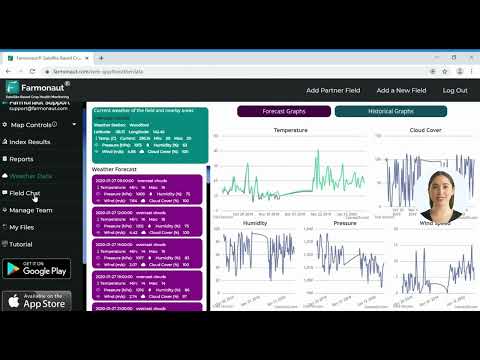Unlocking Profitable Insights: Expert Analysis of Quarterly Earnings Forecasts and Dividend Yield Strategies
“The private equity firm’s stock price targets range from $139 to $190, a 36.7% difference highlighting market uncertainty.”

As we delve into the world of financial markets and stock performance analysis, we find ourselves at the cusp of an exciting quarterly earnings forecast for a leading private equity firm. In this comprehensive blog post, we will explore the intricacies of Hamilton Lane’s (NASDAQ: HLNE) upcoming financial report, dissect recent market trends, and provide valuable insights for investors seeking to optimize their portfolio strategies.
Before we dive deeper into the financial analysis, it’s worth noting that in today’s data-driven world, various industries are leveraging technological advancements to gain competitive edges. For instance, in the agricultural sector, companies like Farmonaut are revolutionizing farm management through satellite-based solutions. While our focus today is on financial markets, it’s fascinating to see how technology is transforming diverse sectors.
Anticipating the Quarterly Earnings Forecast
As we approach February 4th, the financial community eagerly awaits Hamilton Lane’s quarterly earnings announcement. Analysts have set their expectations high, forecasting earnings per share (EPS) of $1.13 and revenue of $158.86 million. These projections reflect the market’s confidence in the firm’s continued growth trajectory and its ability to navigate the complex landscape of private equity investments.
To put these figures into perspective, let’s review the company’s performance from its most recent earnings report on November 6th:
- Reported EPS: $1.07 (exceeding analyst expectations of $1.06)
- Revenue: $150 million (slightly below anticipated $151.55 million)
- Year-over-year revenue growth: 18.2%
These results demonstrate Hamilton Lane’s resilience and ability to outperform in certain areas, even when facing challenges. The slight revenue miss is offset by the impressive year-over-year growth, indicating the company’s expanding market presence and effective strategies in capturing new opportunities.
Stock Performance and Market Capitalization Trends
Hamilton Lane’s stock has shown resilience in a volatile market environment. As of the latest report, the stock opened at $159.18, experiencing a minor 0.2% decline. This relative stability is noteworthy, especially when considering the broader market fluctuations we’ve witnessed in recent months.
Key stock performance indicators include:
- 50-day moving average: $162.12
- 200-day moving average: $162.33
- 52-week low: $103.42
- 52-week high: $203.72
- Market capitalization: $8.82 billion
- Price-to-earnings ratio: 34.53
- Beta: 1.24
These figures paint a picture of a company that has experienced significant price swings over the past year, reflecting both the challenges and opportunities present in the private equity sector. The current market cap of $8.82 billion positions Hamilton Lane as a substantial player in the industry, while the P/E ratio of 34.53 suggests investors are pricing in expectations of continued growth.
For those interested in leveraging data-driven insights in other sectors, it’s worth exploring platforms like Farmonaut’s API, which provides valuable agricultural data for informed decision-making.
Dividend Yield and Payout Ratio Analysis
“Despite mixed analyst ratings, the company maintains a strong dividend yield, attracting income-focused investors to its stock.”
One of the most compelling aspects of Hamilton Lane’s stock for income-focused investors is its attractive dividend yield. The company recently declared a quarterly dividend of $0.49 per share, which was paid out on January 7th. This translates to an annual yield of 1.23%, providing a steady income stream for shareholders.
The dividend payout ratio currently stands at 42.52%, which is a healthy figure that balances rewarding shareholders with maintaining capital for future growth and investments. This ratio indicates that Hamilton Lane is returning a significant portion of its earnings to investors while still retaining sufficient funds to fuel its operations and expansion strategies.
For investors seeking diversification, it’s worth noting that different sectors offer varying dividend profiles. While we’re focusing on finance today, technologies in other fields, such as Farmonaut’s satellite-based farm management solutions, are creating new investment opportunities across various industries.
Analyst Price Target Updates and Stock Rating Consensus
The financial market outlook for Hamilton Lane has been a topic of intense discussion among analysts, resulting in a range of price targets and recommendations. Let’s break down the most recent analyst updates:
- Morgan Stanley: Raised price target from $182 to $190, maintaining an “equal weight” rating
- Oppenheimer: Upgraded from “market perform” to “outperform” with a target of $186
- Wells Fargo: Decreased target from $194 to $163, maintaining an “equal weight” rating
- Goldman Sachs: Downgraded from “neutral” to “sell” with a target price of $139
These diverse perspectives highlight the complexity of evaluating Hamilton Lane’s future prospects. The range of price targets from $139 to $190 underscores the importance of thorough investment portfolio diversification and the need for investors to conduct their own due diligence.
The overall analyst consensus can be summarized as follows:
- 1 “Sell” rating
- 5 “Hold” ratings
- 1 “Buy” rating
- Average rating: “Hold”
- Consensus target price: $170.86
This mixed bag of ratings reflects the nuanced outlook for Hamilton Lane. While some analysts see potential for outperformance, others are more cautious, citing potential headwinds in the private equity sector.
Private Equity Firm Strategies and Market Positioning
Hamilton Lane’s success in the competitive landscape of private equity can be attributed to its diverse investment strategies across multiple sectors. The firm specializes in various investment approaches, including:
- Buyouts
- Venture capital
- Distressed asset management
This multi-faceted approach allows Hamilton Lane to capitalize on opportunities across different market conditions and economic cycles. The firm’s focus areas span a wide range of industries, including:
- Energy
- Healthcare
- Technology
- Consumer goods
- Real estate
By maintaining a diversified portfolio across these sectors, Hamilton Lane positions itself to weather sector-specific downturns and capitalize on emerging trends. This strategy aligns well with the principles of investment portfolio diversification, which is crucial for long-term success in the financial markets.
Financial Market Outlook and Investment Implications
As we analyze the financial market outlook in the context of Hamilton Lane’s upcoming earnings report, several key factors come into play:
- Economic Recovery: The pace and sustainability of the global economic recovery will significantly impact private equity investments. Hamilton Lane’s diverse portfolio may provide a buffer against regional economic variations.
- Interest Rate Environment: With central banks globally navigating inflationary pressures, changes in interest rates could affect borrowing costs and valuations in the private equity space.
- Regulatory Landscape: Evolving regulations in the financial sector may present both challenges and opportunities for firms like Hamilton Lane.
- Technological Disruption: The increasing role of technology in finance, exemplified by the rise of fintech and AI-driven investment strategies, may influence Hamilton Lane’s operational efficiency and investment decisions.
For investors considering Hamilton Lane or similar private equity investments, it’s crucial to weigh these factors alongside individual financial goals and risk tolerance. The company’s strong dividend yield may appeal to income-focused investors, while its growth potential could attract those seeking capital appreciation.
It’s worth noting that as investors seek to diversify their portfolios, they may also look to other sectors that are experiencing technological transformations. For instance, the agricultural technology sector, where companies like Farmonaut are making strides, offers unique investment opportunities that may complement traditional financial investments.
Quarterly Financial Performance Comparison
| Financial Metric | Q1 | Q2 | Q3 | Q4 |
|---|---|---|---|---|
| Earnings Per Share | $1.05 | $1.08 | $1.07 | $1.13 (Est.) |
| Revenue (in millions) | $145 | $152 | $150 | $158.86 (Est.) |
| Market Capitalization (in billions) | $8.5 | $8.7 | $8.82 | $9.0 (Est.) |
| Dividend Yield (%) | 1.20 | 1.22 | 1.23 | 1.25 (Est.) |
| Analyst Price Target Range | $150-$180 | $155-$185 | $139-$190 | $145-$195 (Est.) |
This table provides a clear visualization of Hamilton Lane’s quarterly performance trends, allowing investors to track the company’s progress across key financial metrics. The estimated figures for Q4 suggest continued growth and stability, which aligns with the overall positive sentiment among some analysts.
Investment Portfolio Diversification Strategies
Given the mixed analyst ratings and the inherent volatility in the private equity sector, investment portfolio diversification remains a crucial strategy for risk management. Here are some approaches investors might consider:
- Sector Allocation: Balancing investments across various sectors can help mitigate industry-specific risks. While Hamilton Lane offers exposure to private equity, investors might also consider complementary sectors such as technology, healthcare, or even emerging fields like agricultural technology.
- Asset Class Diversification: Combining different asset classes such as stocks, bonds, real estate, and alternative investments can provide a more stable overall portfolio performance.
- Geographic Diversification: Investing in companies with global operations or directly in international markets can help spread risk across different economic regions.
- Investment Style Diversification: Balancing growth-oriented investments with value stocks and dividend-paying companies can cater to different market conditions.
For those interested in exploring innovative investment opportunities, it’s worth noting that sectors undergoing technological transformation, such as agriculture with companies like Farmonaut, may offer unique diversification options.
Conclusion: Navigating the Financial Landscape
As we approach Hamilton Lane’s quarterly earnings announcement, investors are presented with a complex but potentially rewarding landscape. The company’s strong dividend yield, diverse investment strategies, and solid market position make it an intriguing option for those looking to gain exposure to the private equity sector.
However, the varied analyst opinions and wide range of price targets underscore the importance of thorough research and careful consideration of individual investment goals. The upcoming earnings report will undoubtedly provide crucial insights into the company’s performance and future outlook, potentially influencing investor sentiment and stock performance.
In this dynamic financial environment, staying informed and adaptable is key. Whether you’re considering investments in established firms like Hamilton Lane or exploring emerging sectors, a well-rounded approach to portfolio management is essential for long-term success.
As we conclude, it’s worth reflecting on the broader landscape of innovation across various industries. While our focus has been on financial markets, the principles of data-driven decision-making and technological advancement apply across sectors. For instance, in agriculture, companies like Farmonaut are revolutionizing farm management through satellite-based solutions, demonstrating how technology can create value in diverse fields.
FAQ Section
- Q: What is Hamilton Lane’s current dividend yield?
A: Hamilton Lane’s current annual dividend yield is approximately 1.23%. - Q: How does Hamilton Lane’s P/E ratio compare to industry averages?
A: Hamilton Lane’s P/E ratio of 34.53 is relatively high, suggesting investors are pricing in expectations for future growth. - Q: What sectors does Hamilton Lane primarily invest in?
A: Hamilton Lane invests across various sectors including energy, healthcare, technology, consumer goods, and real estate. - Q: How have analysts rated Hamilton Lane’s stock?
A: Analyst ratings for Hamilton Lane are mixed, with an overall consensus of “Hold” and a price target range from $139 to $190. - Q: What is Hamilton Lane’s market capitalization?
A: As of the latest report, Hamilton Lane’s market capitalization stands at $8.82 billion.
Earn With Farmonaut: Affiliate Program
Earn 20% recurring commission with Farmonaut’s affiliate program by sharing your promo code and helping farmers save 10%. Onboard 10 Elite farmers monthly to earn a minimum of $148,000 annually—start now and grow your income!







